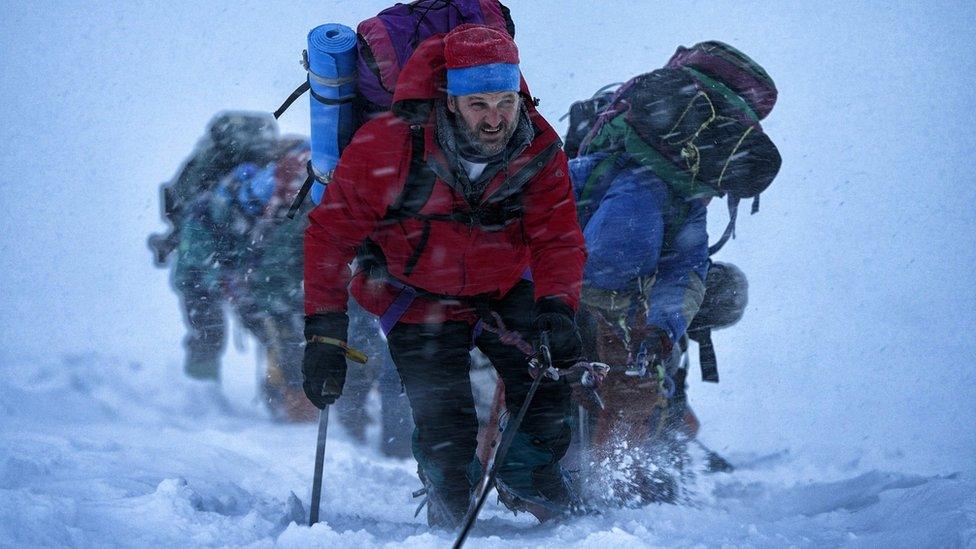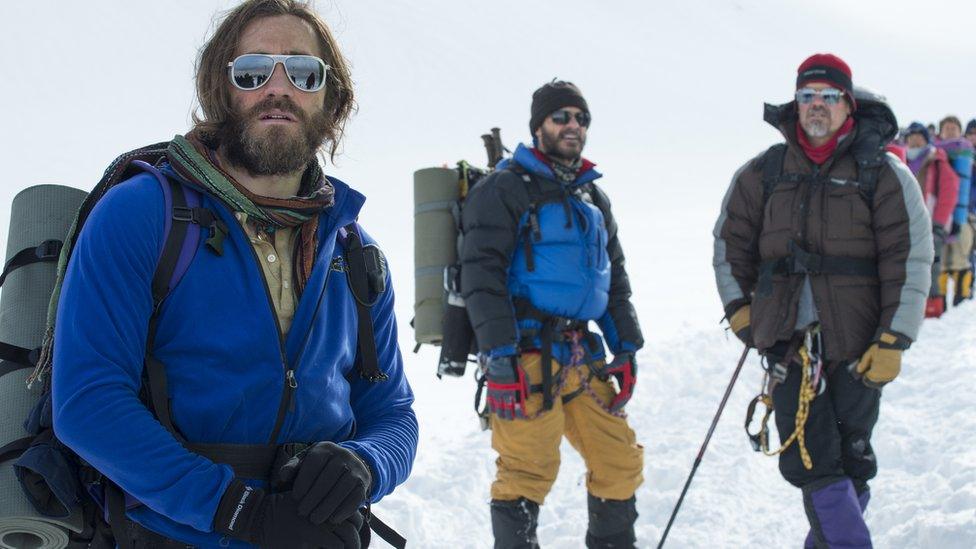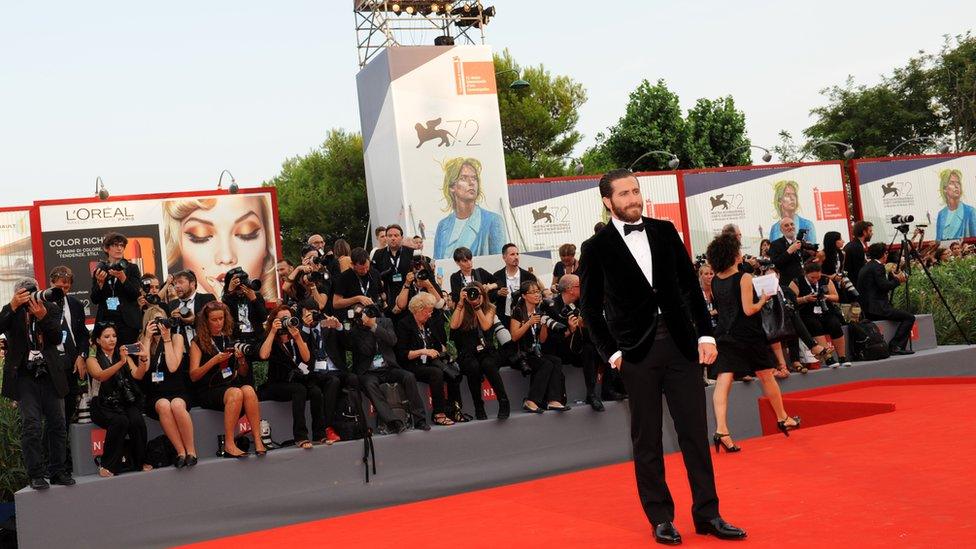Everest: Disaster movie opens Venice film festival
- Published

The film charts two expeditions attempting to reach Everest's summit
Long before and after its summit was first officially conquered in 1953, scaling Everest, the world's highest peak, has been the ultimate dream of many mountaineers. Too often though, they have paid the ultimate price - more than 250 climbers are known to have died on its slopes.
On May 11 1996, eight climbers from several expeditions were killed during a severe blizzard as they returned from the summit. The movie of their story, also called Everest, and starring Jake Gyllenhaal, Keira Knightley, Josh Brolin and Zero Dark Thirty's Jason Clarke, has opened the Venice International Film Festival.
Gyllenhaal, who plays an expedition leader, Scott Fischer, calls it "the antithesis of a Hollywood disaster movie where it's all about surviving".
He continues: "This is an odyssey in the sense that you have to get home as well, and experienced climbers know that getting down from Everest is often more dangerous than getting up.
"In real life, Mother Nature is almost always going to win, so it's not like in a typical film where a human or a superhuman beats all the odds, and that makes it a bit more real."
The film was conceived by British production company Working Title, and shot in 3D; but despite its blockbuster potential, Everest's budget was around $70m (£45m), roughly the same as last year's Sin City: A Dame To Kill For.
The film's director, Icelandic filmmaker Baltasar Kormakur, was mainly known outside Europe for 2013 police movie 2 Guns, starring Denzel Washington.
Actor Josh Brolin jokes that it was his "midlife crisis" that got him involved in the project, adding that, "at the time I needed something like this in my life. I needed to be confronted with something more than the psychological roles I've done, I needed the physical as well.
"A lot of the preparation was putting myself in very precarious situations, but through that I discovered adventure. This redefined me."

Eight climbers were killed during a freak blizzard
But if that suggests the actors' safety was ever put at risk, director Kormakur denies he ever put his cast and crew into danger. Although he admits to facing "perilous situations every day. We shot at first in the foothills of Everest, we landed at Kathmandu, the world's most dangerous airport, and from there we basically walked to base camp.
"We had the support of Sherpas, and yaks carrying the packs. But you can't work a twelve hour day at that altitude without difficulty. Crew, actors, and even the Sherpas were starting to get sick and eventually had to be evacuated by helicopter. From there we went to the Dolomites and shot in temperatures of minus 30 degrees Celsius.
"I would say I put everyone through pain but not injury - no one went foolishly into danger. The struggle wouldn't be worth much however if the story of these climbers were not handled in a truthful manner."
The tragic events of May 11, 1996 made global headlines - that year would produce the worst death toll on Everest until the avalanche of 2014, which killed sixteen Nepalese guides.
But there is still much confusion around the doomed expedition led by Rob Hall, from New Zealand-based Adventure Consultants, and Scott Fischer from Mountain Madness in Seattle.
They led their teams towards the summit in clear skies. On the way down, a violent storm hit them as they tried to scale a 40 foot wall known as Hillary Step, after Everest's first official conqueror, Sir Edmund Hillary.
Rob Hall spent two nights exposed on the South Summit, unable to make the descent himself, and unable to be rescued from below. Jason Clarke, who plays him, calls the story " a great monumental whodunit, as we still don't truly know the chain of events that led to the tragedy. Yet holds up by itself; we don't need a Hollywood ending and it's not sentimental."

Gyllenhaal was among the stars on the red carpet at the premiere in Venice
But the film does point towards the fact that there were 34 climbers from different expeditions trying to get to the top that day, 29,000 feet above sea level; the cruising level of a 747 jet.
"It's very odd to think that you would be waiting to get to the peak of Everest, that there could be scores of people on a rope queuing like they were in an amusement park," explains Jake Gyllenhaal.
"The top of the mountain is known as the Death Zone for a reason - your body is shutting down and dying. People don't get to the top and party, they go straight back down. There are more difficult climbs in the world, but on Everest, you struggle with suffocation and losing air. Human beings just aren't meant to survive at that altitude, and that's why you have the death rate.
"Even at the heights we got to, we experienced symptoms of sickness and our brains not functioning as they should."
Since its premiere, Everest has received mixed reviews, with the Guardian calling it, external "a disaster movie that isn't a total success", while Time Out , externalpraises it "for leaving you breathless."
In recent years, the opening film at Venice, which has included last year's Oscar-winner Birdman, Alfonso Cuaron's Gravity and Darren Aronofsky's Black Swan, has reaped rewards during awards season.

The film is set to be released in the UK this month
Brolin dismisses any official recognition as "not the reason any of us did this. We all met the survivors' families and spent time with them; we know they are pleased with the movie and the way we have depicted their loved ones.
"This is the story of people trying to tackle something impossible. The question comes up - why? Why would you ever put yourself in that situation? As someone once remarked, 'because it's there'.
"But I think also it must be because those who do reach the top get to experience an unique and singular beauty at the top of the world that very few others get to share."
Everest is released in the UK on 18 September.